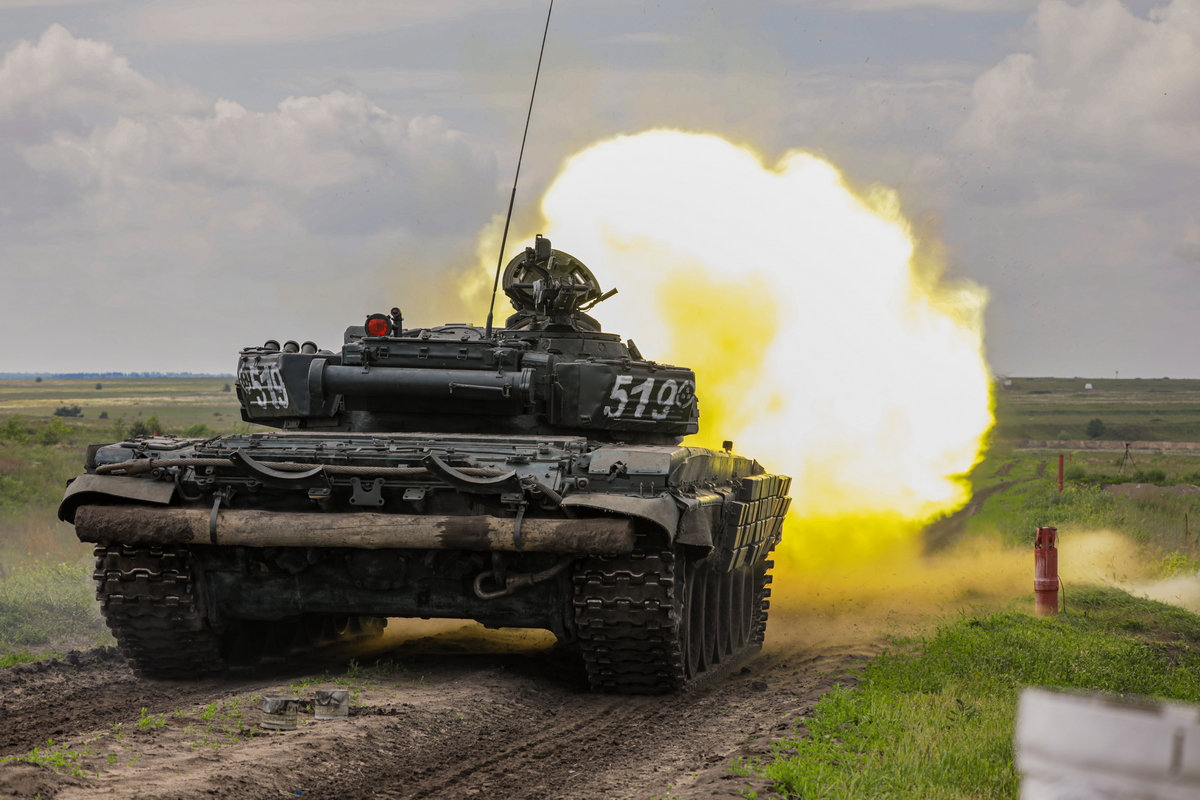
The T-72’s long production run, beginning in 1971, has seen it being utilized in conflicts from the Iran-Iraq War to the ongoing war in Ukraine, having been adopted by both sides.

According to the U.S. Army, over 20,000 T-72s have been produced, with a variety of models exhibiting varying capabilities.

Despite its age, the base T-72 model, equipped with a 125-millimeter smoothbore cannon and a V12 diesel engine, has shown considerable resilience on battlefields across the globe.

The advanced T-72B3 model, with a more potent engine outputting 1,130 horsepower.

In contrast, the American M1 Abrams, designed in the late 1970s to counter Soviet armor, boasts superior technology and firepower. It features a 120-millimeter cannon capable of firing a range of ammunition types and an AGT-1500 turbine engine, noted for its fuel versatility.

This American demonstrated its battle-worthiness in the first Gulf War, specifically at the Battle of 73 Easting in February of 1991, where it decimated 160 enemy tanks without a single Abrams lost to enemy fire, many of which were T-72s.

In the contemporary context of the Ukraine war, which began on February 24, 2022, the T-72 remains prevalent.

It’s used by Ukrainian forces and newer iterations by Russian forces. The United States has committed to bolstering Ukraine’s armored capabilities by providing 31 M1 Abrams tanks.

Despite this, the U.S. Army declined an interview about the M1’s capabilities, “awaiting additional guidance from the Department of Defense.”

The M1’s exceptional maneuverability will be crucial in navigating the expansive, flat open terrain in the Donbas region of eastern Ukraine, where most of the fighting has taken place since the beginning of the conflict.

The US tanks also feature higher lethality and survivability, equipped with superior cannons, guns, and armor compared to the T-72.

Nevertheless, the M1 introduction to Ukraine is not without challenges.

Its gas turbine engine is more demanding in terms of logistics and maintenance compared to the diesel engines of T-72s.

This necessitates a robust sustainment infrastructure, which the U.S. is actively addressing by providing Ukraine with spare parts.

The T-72’s versatility and sheer numbers juxtaposed against the Abrams’ technical superiority and combat track record continue to make these tanks subjects of interest and comparison.
Relevant articles:
– T-72 Vs M1 Abrams: How Do These Battle Tanks Compare?, SlashGear
– US M1 Abrams vs. Ukraine’s T-72 tanks: Here’s how they compare, New York Post
– Abrams tanks were ‘built to kill’ Russian armor, but Ukraine has its work cut out for it keeping them in the fight, businessinsider.com

